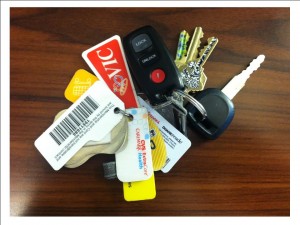
How many loyalty tags do you have on your keychain? Five? Six? Ten? Would you say those tags make you more loyal, or do you just have them for the discounts? And if it's just for the discounts, does that really build your loyalty or would you switch to the store down the street if they had better discounts?
Those questions are very real and speak to the issues behind research concluded recently by the International Institute for Analytics (IIA), which sought to identify the tenets of customer loyalty strategies and to understand how organizations are using analytics to improve loyalty programs.
Customer loyalty programs are a business imperative in our world of increasingly scarce resources, intensifying competition and fickle customers. As a consequence, loyalty programs have mushroomed to the point that the United States has 2.65 billion loyalty program memberships. These programs are demand-driven, but the research suggests that in many cases they have the unintended consequence of driving demand for discounts and not necessarily cultivating loyalty.
When building winning loyalty programs, marketers face many of the same issues in all areas of marketing:
- Offering rewards that customers value.
- Measuring program effectiveness.
- Program differentiation.
- Coordination across all customer contact points.
The research revealed the factors that differentiate effective loyalty programs from the rest, which can be summed up in five main lessons:
- Have a dedicated customer loyalty function.
Effective loyalty programs are associated with having a dedicated function or department within the organization charged with managing customer loyalty. That dedication of resources indicates a commitment to loyalty that manifests itself in greater degrees of loyalty. - Place greater emphasis on the customer experience.
Those with highly effective programs showed themselves to be outwardly-focused on the customer experience by indicating their top two goals being brand affinity and improving customer satisfaction. By contrast, focusing on retaining customers and keeping the most valuable customers indicate a more inwardly-focused orientation. - Offer personalized rewards.
Not surprisingly, when organizations go a step beyond the discount and offer a greater variety of program components, they're usually associated with being highly effective. Examples of personalization include customer-specific offerings, VIP services and personalized recommendations. - Leverage social media.
As another indicator of an outward focus on the customer, effective loyalty programs are those associated with organizations that use social media to respond publicly to customer posts on social media. Those programs are also more likely to use measurement and analytics on their social media. - Put analytics at the core.
Having data analysis as a core component of the loyalty initiative and having a strong data-driven culture are both associated with greater effectiveness in loyalty programs.
These conclusions and more are available in the full report from the IIA, Keeping Customers: Successful Loyalty Through Analytics. Download it and take a look at how analytics differentiate effective loyalty programs. Let me know what you think.
